Key takeaways
- Concert video collections allow fans to relive live performances, capturing emotions and band evolution through various formats and organization methods.
- Proper tagging and metadata enhance accessibility and personalization, turning videos into a searchable database of unforgettable moments.
- Backing up videos with multiple storage options ensures preservation of quality and peace of mind, safeguarding against potential data loss.
- Sharing concert videos fosters community engagement among fans, creating dynamic experiences through playlists and discussions around shared memories.
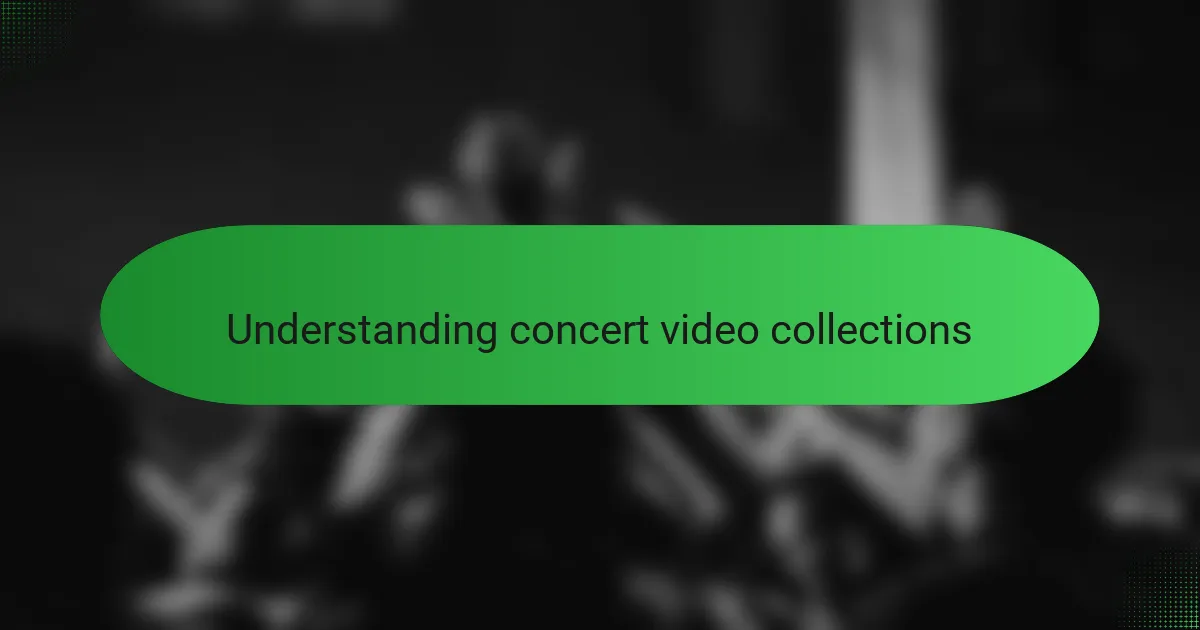
Understanding concert video collections
Concert video collections are more than just stacks of DVDs or files; they’re a gateway to reliving the raw energy and unforgettable moments of live performances. Have you ever noticed how watching a favorite concert can instantly transport you back to that night, capturing the atmosphere and emotions in a way studio albums simply can’t? For me, these collections serve as a personal archive of memories, each video holding a story of a particular time and place in the band’s journey.
I’ve found that understanding the nuances of a concert video collection means recognizing its diversity—different tours, setlists, and even the band’s evolving style. This variety makes every recording unique and precious, compelling me to organize them thoughtfully so I never lose track of a single gem. Isn’t it fascinating how a single video can show a band’s growth or a shift in their artistic expression over the years?
Another aspect that struck me is how these collections reveal the relationship between the band and their fans worldwide. Watching footage from different cities or even decades apart highlights not only the music but the shared passion and culture within the fan community. Don’t you think that’s part of what makes collecting concert videos such a meaningful experience?

Choosing formats for video storage
Choosing the right formats for storing concert videos felt like picking the perfect case for a prized vinyl—each format has its own vibe and purpose. I lean towards digital files like MP4 because they strike a great balance between quality and ease of sharing, but sometimes I still hold onto physical DVDs for those rare, remastered editions that just feel more tangible.
When I started digitizing my collection, I realized that choosing lossless formats can preserve every note and cheer in pristine quality, but it also means larger file sizes and more storage space. Have you ever debated between convenience and quality? For me, it’s a trade-off worth making, especially when preserving moments that mean so much.
What surprised me was how versatile formats can be—some are perfect for archiving, others for quick playback on different devices. I often keep multiple copies in different formats to ensure I can enjoy the videos anywhere, anytime, without worrying about compatibility or losing the clarity that makes concert footage truly come alive.
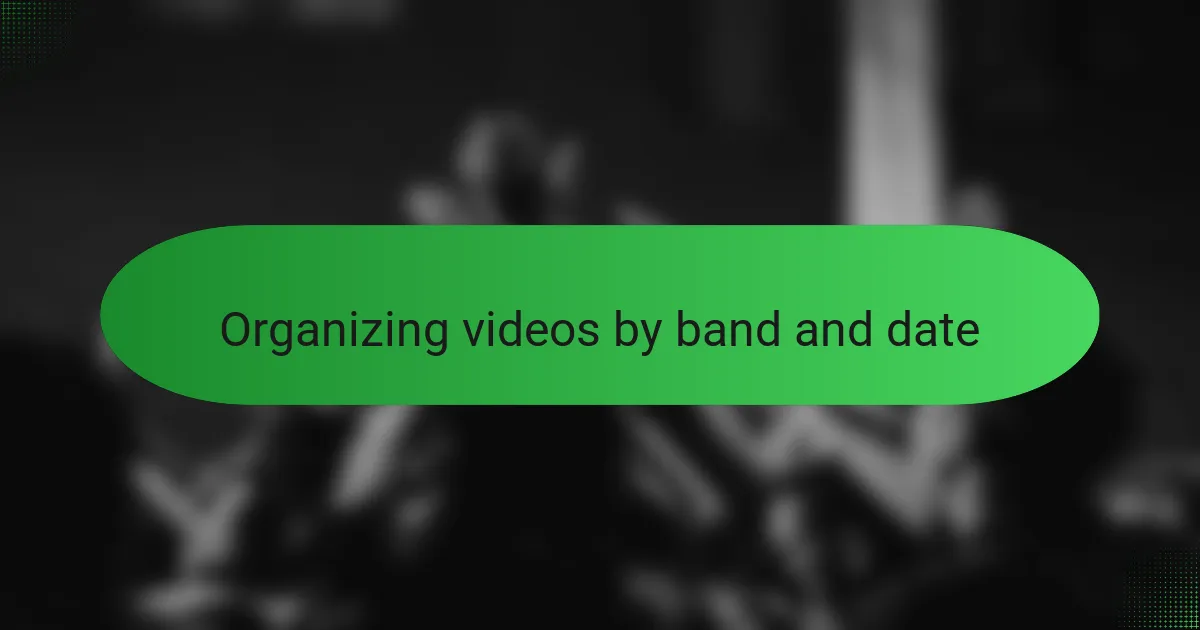
Organizing videos by band and date
When I first started organizing my concert videos, sorting them by band and date felt like piecing together a musical timeline that told a story beyond just performances. It’s amazing how grouping shows by band reveals their evolution across years, almost like watching their journey unfold in chapters. Don’t you find it rewarding when you can instantly pull up that legendary ’89 gig or the breakthrough 2005 reunion show without digging through piles of files?
I’ve noticed that labeling videos with precise dates adds a layer of context that deepens the experience. Knowing exactly when a concert happened — whether it was during a tumultuous tour or a triumphant comeback — brings those emotions flooding back as if I were right there in the crowd. It’s a simple step, but it transforms my collection into a vivid diary of moments that capture the band’s spirit at specific points in time.
Sometimes, I even create folders named after tour cycles or iconic concerts within each band’s section. This method not only keeps the collection neat but also sparks nostalgia every time I browse through it. Have you ever stumbled on a video you forgot about and felt that rush of memories? That’s why organizing by band and date isn’t just practical for me—it’s the heart of reliving those unforgettable live experiences.

Tagging and metadata for easy access
Tagging and metadata for easy access turned out to be a game-changer in how I navigate my concert video collection. I started adding tags like venue names, setlists, and even standout songs to each file, making it feel like I had created my own searchable concert database. Have you ever tried finding a specific performance only to get lost in a sea of generic filenames? That frustration pushed me to be meticulous with my tags.
What I love about metadata is how it adds richness beyond just the surface details. Including notes about crowd reactions or special guest appearances helps me remember why a particular show was unforgettable. It’s like each tag carries a memory, turning a simple video file into a story waiting to be rediscovered.
Sometimes, I get creative and use color-coded tags to highlight favorite tours or era-specific vibes. This small step feels surprisingly emotional—it’s a personal signature on my collection that reflects how deeply connected I am to the band’s history. Doesn’t it feel great when you can pull up any video in seconds and instantly dive into that exact live moment you crave?
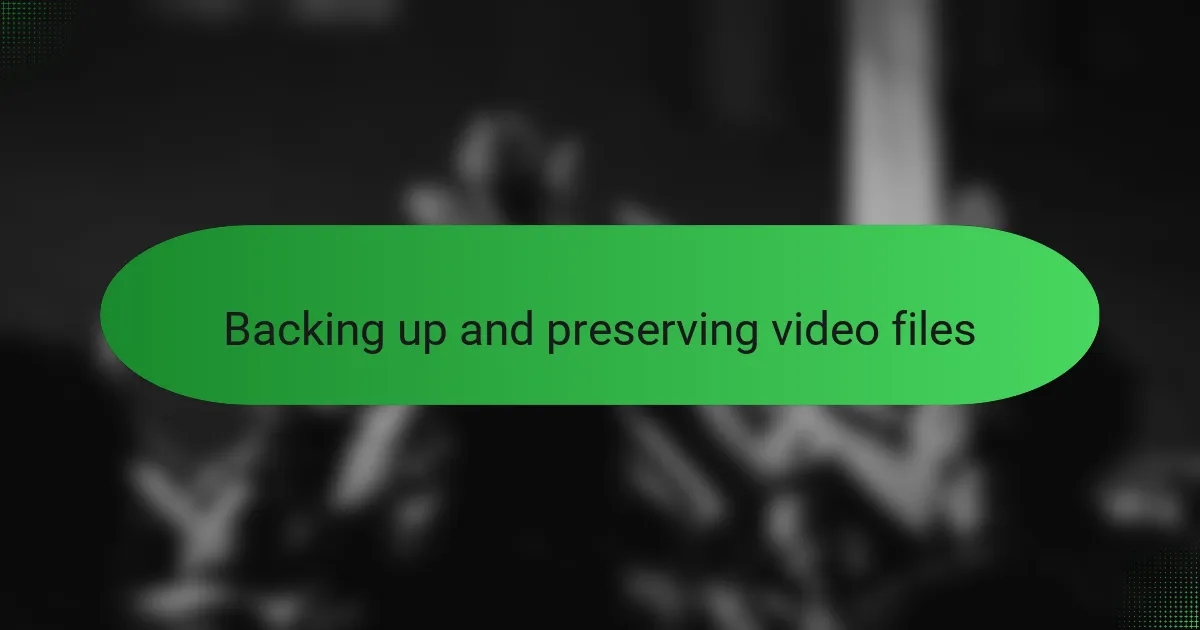
Backing up and preserving video files
Backing up my concert videos quickly became non-negotiable once I realized how easily digital files can vanish—whether due to a hard drive crash or accidental deletion. I made it a habit to keep multiple backups: one on an external drive and another safely stored in cloud storage. Have you ever lost a precious recording and felt that sinking feeling? I can tell you, it’s a harsh lesson in the value of redundancy.
Preserving video quality while backing up meant paying close attention to file formats and compression. I always opt for copies that maintain the original resolution—no downsizing or heavy compression—because I want to relive those concerts in the crispest detail possible. The experience is so much richer when the crowd’s roar and guitar riffs hit just right, isn’t it?
One thing that surprised me is how organizing backups by date and band name on each storage device saves me from frantic searching later on. It’s a simple routine but hugely effective—like having a safety net that’s also a well-labeled archive. Does your backup system bring you peace of mind or more headaches? For me, it’s definitely the former.
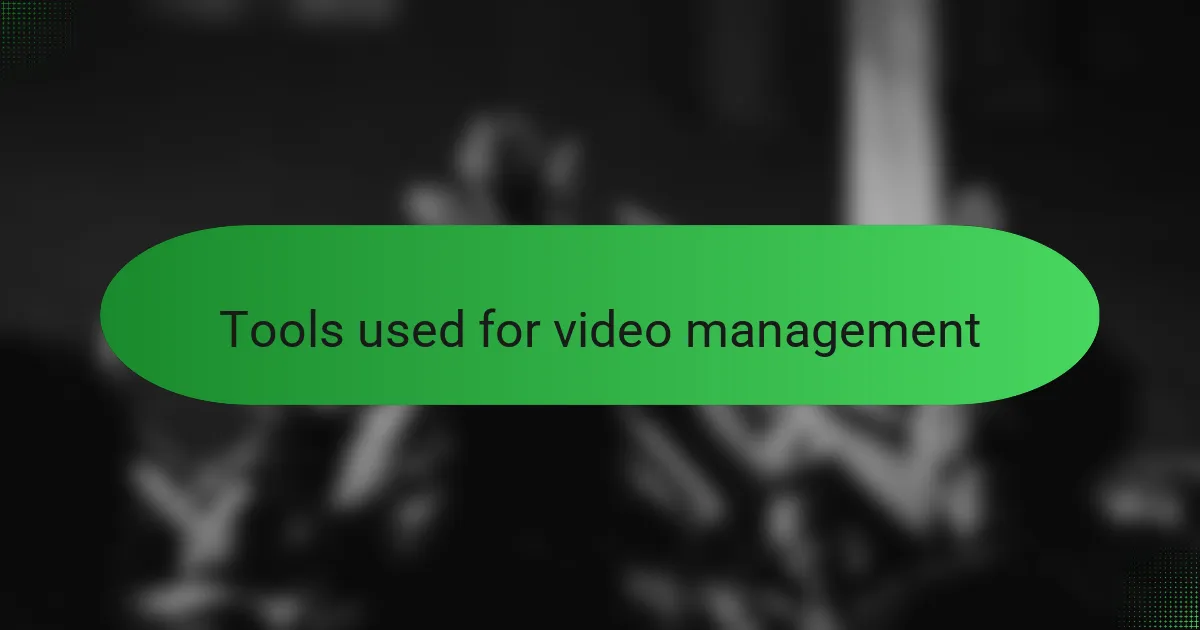
Tools used for video management
Managing my concert video collection wouldn’t be the same without a few trusty tools. I rely heavily on media library software like Plex and Kodi—they not only help me store and organize videos but also automatically pull in metadata like concert dates and setlists. Have you ever tried sorting hundreds of files manually? It’s overwhelming, but these tools make it feel like a breeze.
For tagging and quick searching, I often use dedicated media managers such as Adobe Bridge or even simple spreadsheet trackers. They let me customize tags and notes for each video, adding that personal touch—like noting a killer guitar solo or a surprise guest appearance. It’s kind of like curating my own mini rock encyclopedia, tailored just for me.
And when it comes to storage and backups, nothing beats a combination of external hard drives and cloud services like Google Drive or Dropbox. I’ve had moments of panic when a drive failed, but having multiple backups spread across platforms gave me peace of mind. Making sure my videos are safe feels just as important as organizing them neatly in the first place, wouldn’t you agree?
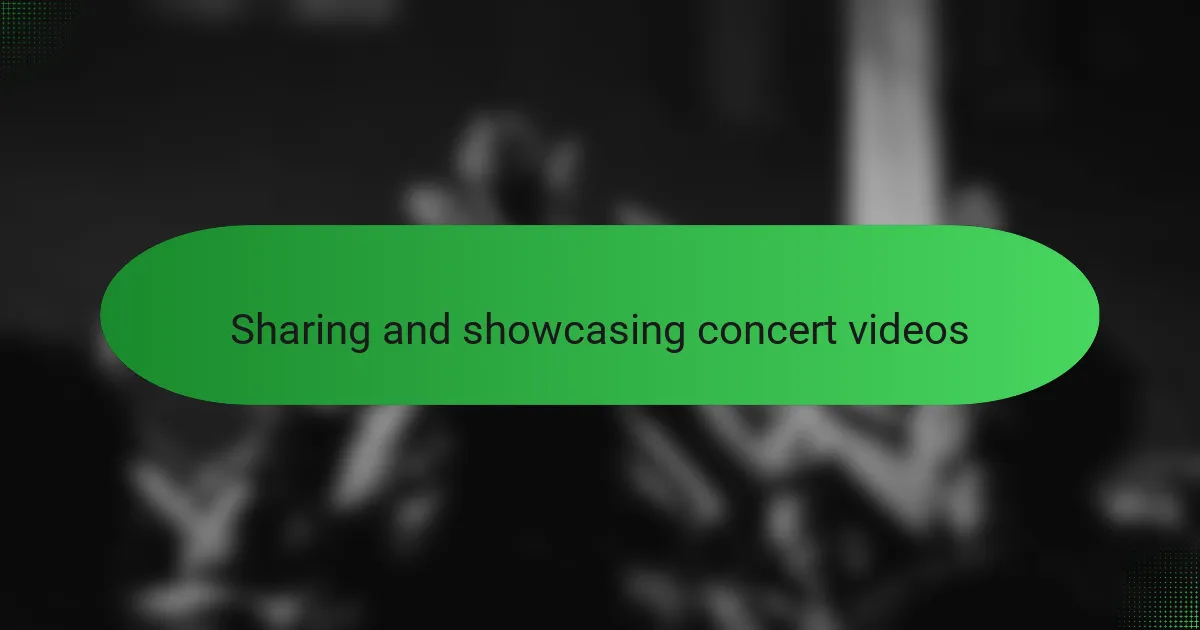
Sharing and showcasing concert videos
Sharing concert videos has become one of my favorite ways to connect with fellow fans and keep the live music spirit alive. Whenever I upload or stream a rare show, I notice how quickly conversations spark—fans trading memories or debating setlists. It’s amazing how a single video can unite so many people who weren’t even at the concert.
I also like to showcase select videos by creating themed playlists or highlight reels for special occasions like anniversaries or band birthdays. This method turns my collection into a dynamic experience rather than just a static archive. Have you ever seen someone’s eyes light up when you share that epic encore or a never-before-seen fan recording? Those moments make all the organizing worthwhile.
Of course, sharing means balancing quality and accessibility—I’ve learned to compress files just enough to keep great sound and visuals while making uploads smoother. Using platforms that support comments and community interaction adds another layer of engagement, turning my concert videos into living memories we can all relive together. Don’t you think that’s what being a fan is really about?